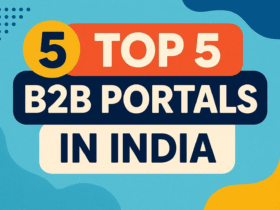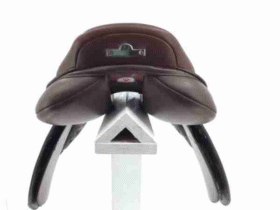Being trapped under heavy debt feels like living with a weight you can’t set down. Every paycheck vanishes into interest payments, credit cards keep climbing, and stress becomes part of daily life. At that point, many people begin searching for a way out and come across Pacific Debt Relief — a company that promises to negotiate with your creditors and settle your debt for less than what you owe.
The idea sounds hopeful, but also suspiciously easy. Can anyone really reduce their debt that much? This guide takes an honest look at how Pacific Debt Relief operates, what you can expect, and how it compares to alternative solutions like Credit Ninja loans.
Understanding How Pacific Debt Relief Works
Pacific Debt Relief isn’t a lender or a credit counselor. It’s a debt settlement company that works to reduce your unsecured debts through negotiation. Instead of paying your creditors directly, you send monthly deposits into a separate account managed by the company. Once enough money builds up, they offer lump-sum settlements to your creditors — deals where the creditor accepts less than the full balance as payment in full.
For example, if you owe $25,000 on credit cards, the company might negotiate to settle those accounts for $15,000. That sounds great, but it comes at a cost: you have to stop paying your creditors, which hurts your credit, and you’ll pay Pacific a fee after each successful settlement.
The Typical Process
A Pacific Debt Relief program usually looks like this:
- Consultation: You speak with a representative who reviews your financial situation. Most clients need at least $10,000 in unsecured debt to qualify.
- Enrollment: You agree to make one monthly deposit into a settlement account.
- Negotiation: Pacific Debt begins contacting creditors to arrange settlements as your balance grows.
- Approval: Each offer is reviewed with you before funds are released.
- Completion: Once all debts are settled, the program ends — typically within two to four years.
This process takes time and patience, but it gives structure to what otherwise feels like chaos.
The Advantages
Debt settlement appeals to people who’ve already fallen behind and see no realistic way to catch up. The main benefits of working with Pacific Debt Relief include:
- The potential to pay 40–60% less than what you owe.
- A single monthly deposit instead of juggling multiple bills.
- Relief from collection calls once settlements start.
- Avoiding bankruptcy and its long-term legal consequences.
For many clients, just having a plan and a negotiator on their side brings a sense of relief that’s been missing for years.
The Downsides
That relief doesn’t come free. The major disadvantages of debt settlement include:
Credit Damage: You’ll stop paying your creditors to gain negotiation leverage. This will cause your accounts to go delinquent and your credit score to drop — sometimes by more than 100 points.
Fees: Pacific Debt Relief charges 15–25% of the total debt you enroll. If you join with $20,000 of debt, expect to pay $3,000–$5,000 in fees.
Taxes: The IRS can treat forgiven debt as taxable income. Settling $30,000 for $18,000 could mean you’ll owe taxes on the $12,000 difference.
Patience Required: It’s not fast. Programs usually last between two and four years.
Despite these drawbacks, many clients find that the trade-off is worth it if they can finally eliminate unpayable debt.
Is Pacific Debt Relief Legit?
Yes, it’s a legitimate and well-established company. Founded in 2002 and based in San Diego, it has an A+ rating from the Better Business Bureau and accreditation from the American Fair Credit Council. Thousands of clients report successful settlements.
However, it’s not perfect. Some customers complain about delays, inconsistent communication, or confusion about fees. Like any long-term financial service, your experience depends largely on your own consistency and the creditors involved.
Who Should Consider It
Debt settlement can make sense if:
- You have over $10,000 in unsecured debt (credit cards, personal loans, medical bills).
- You’re already missing payments or nearing default.
- You have steady income to make monthly deposits.
- You’re ready to deal with short-term credit damage for long-term relief.
If that describes you, Pacific Debt Relief could be a realistic solution.
Who Should Avoid It
This program isn’t for everyone. It’s not a good fit if:
- You’re still current on your payments.
- You rely on good credit for work, housing, or future loans.
- You can qualify for a low-interest consolidation loan.
- You can’t commit to regular deposits for two to four years.
If you’re just looking for lower payments or faster relief, you might be better off exploring consolidation loans or credit counseling instead.
Comparing Pacific Debt Relief and Credit Ninja
While both Pacific Debt Relief and Credit Ninja aim to help people manage debt, they do it in very different ways.
Pacific Debt Relief helps reduce what you already owe. You don’t borrow new money; you work toward paying off less than your original balance through negotiation. The downside is temporary credit damage and possible tax implications.
Credit Ninja, on the other hand, is a personal lender. It offers installment loans — often to borrowers with less-than-perfect credit — that can be used to consolidate multiple debts into a single payment. You’re not reducing your total debt; you’re restructuring it under a new loan with fixed payments and (ideally) a lower interest rate.
Here’s how the two compare side by side:
| Feature | Pacific Debt Relief | Credit Ninja |
| Type of Service | Debt settlement | Personal lending |
| Goal | Reduce existing debt | Simplify and consolidate debt |
| Credit Required | Poor or fair | Fair or better |
| Credit Impact | Negative short-term | Neutral if paid on time |
| Cost | 15–25% of enrolled debt | Interest on new loan |
| Timeline | 24–48 months | 6–36 months |
In short, Pacific Debt Relief focuses on reduction, while Credit Ninja focuses on reorganization.
The Emotional Toll — and Relief
Debt is never just about numbers. It affects sleep, relationships, and confidence. Many clients describe joining Pacific Debt Relief as an emotional turning point. For the first time, they had a plan instead of panic.
Still, that initial relief can lead to complacency. Debt settlement isn’t “set it and forget it.” You have to stay engaged — tracking progress, approving settlements, and keeping up with deposits. Those who remain active in the process see the best outcomes.
What to Expect During the Program
The first few months can feel rough. Creditors may still call or even threaten lawsuits while negotiations are pending. This stage requires patience and communication.
Once settlements begin, progress accelerates. Each resolved account brings you closer to financial freedom, and collection calls gradually stop. By year two, most clients have settled half their accounts. By year three or four, the program is usually complete.
Rebuilding After Settlement
Finishing a debt settlement program is a major milestone — but it’s not the end of the journey. Your next mission is rebuilding credit.
Start by checking your credit reports to confirm all accounts are listed as “settled.” Dispute any inaccuracies. Then open a secured credit card or small installment loan and make on-time payments every month. Within two years, many people move from poor to fair credit and qualify for mainstream financial products again.
It’s slow, but steady effort pays off.
The Alternative: Using Credit Ninja
If your credit is still in decent shape and you can handle structured payments, borrowing from a lender like Credit Ninja may offer a faster recovery.
Here’s how that would work. You take out one personal loan, pay off your credit cards, and then focus on repaying that single loan at a lower rate. This keeps your accounts current and prevents new delinquencies from hitting your report.
However, it’s not risk-free either. If you default on the loan, you’ll be back in the same situation — only with another creditor added to the list. And depending on your credit, interest rates can still be high.
Mistakes to Avoid
Regardless of the option you choose, avoid these common mistakes:
- Quitting early: Leaving a settlement program halfway through wastes progress.
- Ignoring taxes: Set aside funds for possible IRS obligations.
- Taking new loans: Borrowing while in debt settlement creates more problems.
- Failing to budget: Without financial planning, even reduced debt can grow again.
Success requires persistence and honest budgeting — not quick fixes.
When Debt Settlement Makes Sense
Pacific Debt Relief isn’t the right move for everyone, but for those drowning in unsecured debt and already behind on payments, it can provide a structured and legitimate path out. It’s a better choice than payday loans or endless balance transfers because it addresses the real issue: total debt load, not just cash flow.
It’s most effective when combined with a clear plan to rebuild credit and avoid the habits that caused the debt in the first place.
Final Thoughts
Debt relief isn’t an instant escape — it’s a disciplined process. Pacific Debt Relief can genuinely help you reduce overwhelming debt, but it comes with patience-testing steps, temporary credit damage, and a long timeline.
If you’re already in default, settlement might be your best option. But if you still have fair credit and consistent income, a loan from Credit Ninja could simplify your debt without hurting your credit.
Whichever path you choose, the key is understanding that there’s no miracle solution — just smart strategy, persistence, and a decision to stop letting debt define your life.











Leave a Reply